If you think fruit-bearing shrubs are limited to blueberries and raspberries, think again! The plant world is full of unusual, underappreciated fruiting shrubs that are not only beautiful but also offer tasty and sometimes downright exotic harvests. These shrubs bring unique flavors, eye-catching textures, and conversation-starting appeal to gardens, orchards, and edible landscapes. Whether you’re a seasoned gardener or just love discovering hidden gems, here are 10 unusual fruit-bearing shrubs that are sure to surprise and delight.
1. Goumi Berry (Elaeagnus multiflora)
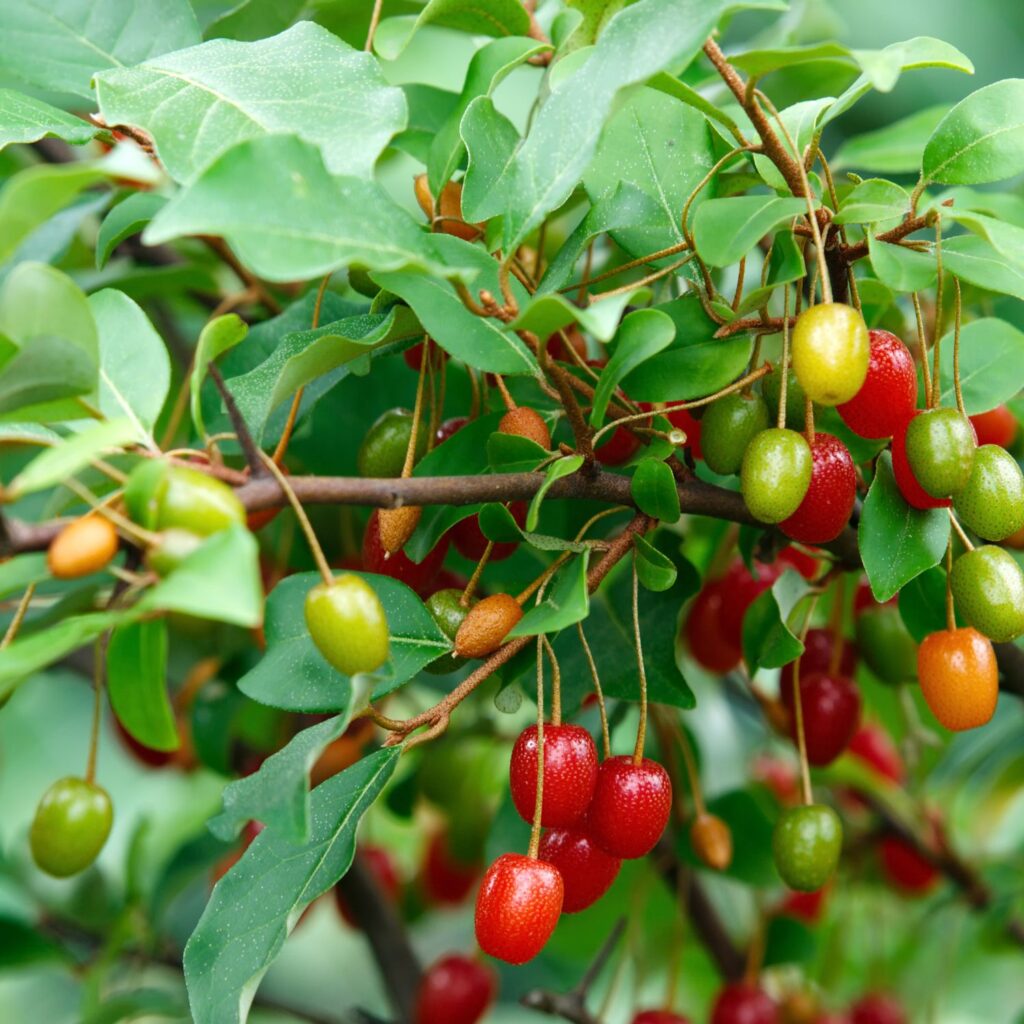
Hardy, nitrogen-fixing, and deliciously tart-sweet.
The goumi berry is a resilient, attractive shrub that produces small, red, cherry-like fruits speckled with silver. These berries have a sweet-tart flavor and are great for fresh eating, jams, or even wine. The shrub also enriches the soil by fixing nitrogen, making it a fantastic companion for other plants. Goumi blooms early with fragrant white flowers, attracting pollinators, and thrives in poor soil and full sun. It’s cold-hardy, drought-tolerant, and productive a true unsung hero in edible gardening.
2. Chilean Guava (Ugni molinae)

Tiny berries bursting with flavor and aroma.
Chilean guava, also known as strawberry myrtle, is a compact, evergreen shrub with glossy leaves and dainty pink flowers. It produces small red berries with an intense, aromatic flavor that has hints of strawberry and spice. Once a favorite of Queen Victoria, this charming shrub is ideal for containers, especially in cooler coastal climates. While not frost-hardy in cold zones, it thrives in full sun with good drainage and offers ornamental value alongside its tasty fruit.
3. Jostaberry (Ribes × nidigrolaria)
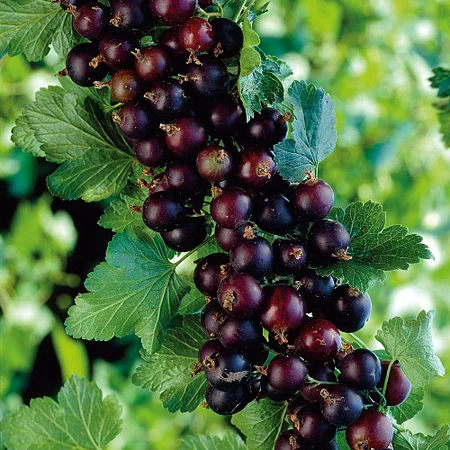
A blackcurrant-gooseberry hybrid with bold flavor.
The jostaberry blends the rich taste of blackcurrants with the tangy zip of gooseberries all without the thorny stems! This vigorous, disease-resistant shrub produces dark, glossy berries that are excellent for fresh eating, preserves, or wine. Jostaberries grow well in full sun to partial shade and reach around 4–6 feet tall. They also attract pollinators and birds while offering a highly productive yield each summer. Expect both beauty and bounty from this unique cross.
4. Honeyberry (Lonicera caerulea)
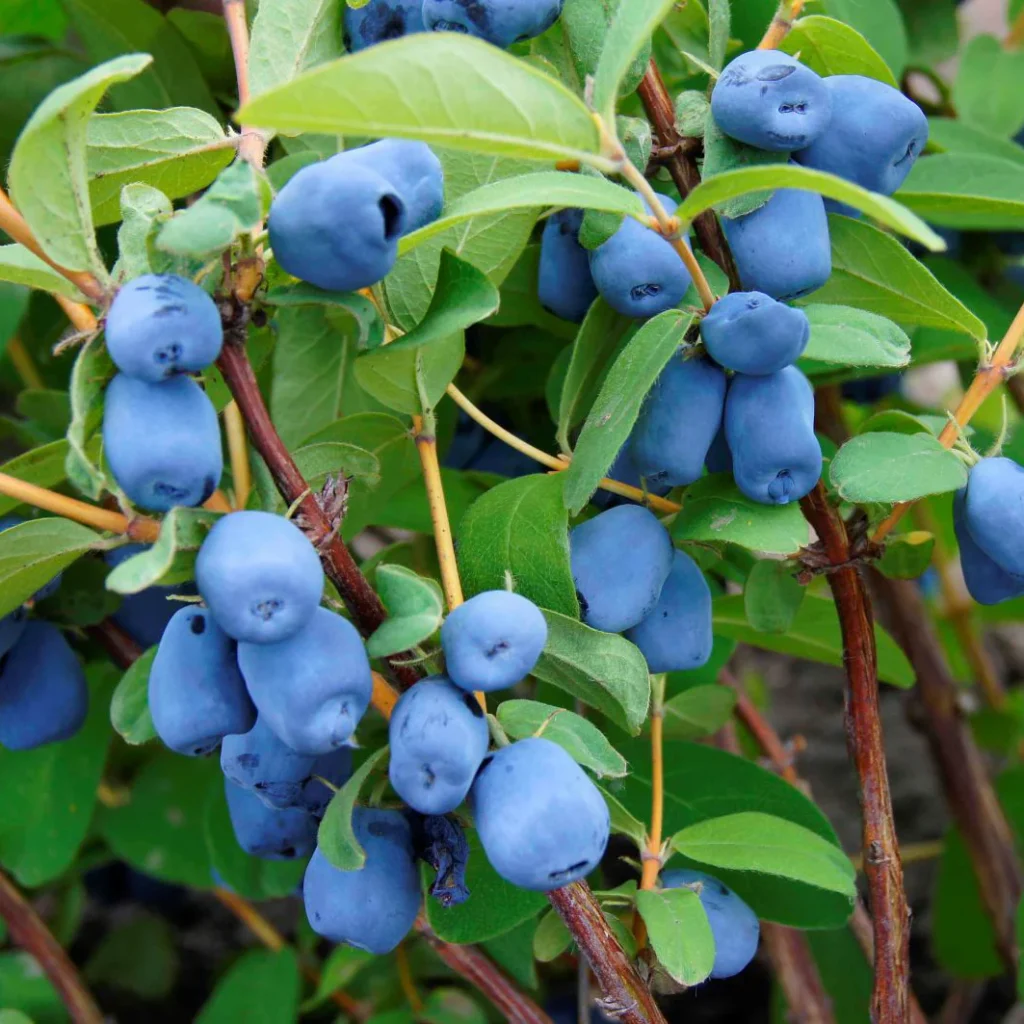
Blueberry look-alike with cold-climate toughness.
Honeyberries, also known as Haskaps, are hardy honeysuckle relatives that produce elongated, dark blue fruits with a flavor reminiscent of blueberries, blackberries, and grapes. These shrubs bloom early, making them great for northern climates with short growing seasons. You’ll need two different varieties for cross-pollination, but once established, they’re low-maintenance and productive. Their delicate spring flowers and sweet fruits make honeyberries a wonderful addition to both edible and ornamental gardens.
5. Japanese Quince (Chaenomeles japonica)
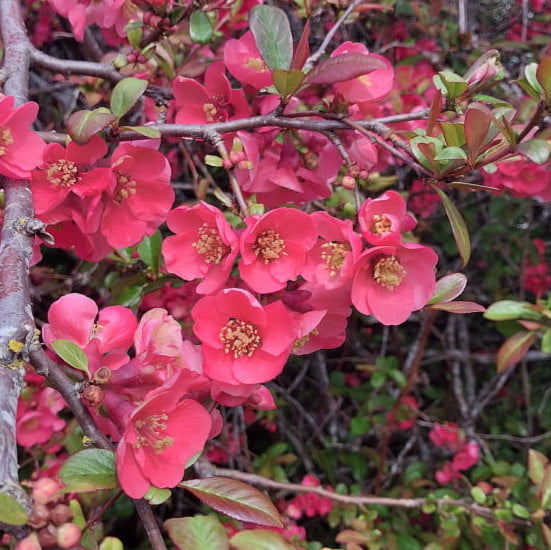
Striking spring flowers and tart, fragrant fruits.
Often grown for its vivid red-orange flowers in early spring, Japanese quince also produces small, yellow-green fruits with a heady aroma and sharp, citrusy flavor. While too tart to eat raw, they shine in jams, jellies, and syrups. The shrub is compact and thorny, making it an effective barrier plant, and it thrives in full sun with minimal care. Its early blooms are a valuable nectar source for pollinators, while the fruit adds unique flair to your kitchen.
6. Aronia (Chokeberry, Aronia melanocarpa)

Superfood berries with bold fall color.
Chokeberries produce glossy black fruits rich in antioxidants and prized for their health benefits. Though astringent when raw, the berries are delicious when cooked into syrups, juices, or baked goods. The shrub itself is striking with white spring flowers, dark berries in late summer, and fiery red-orange fall foliage. It grows well in wet or dry soils and handles full sun to partial shade. Aronia is an easy-to-grow, multi-season shrub with both beauty and bite.
7. Pineapple Guava (Feijoa sellowiana)
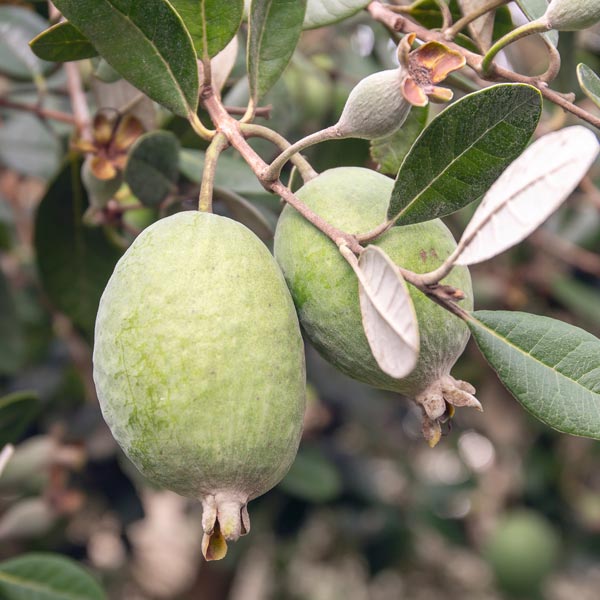
Exotic flavor and edible flowers in one.
Native to South America, pineapple guava is a showy evergreen shrub that produces egg-shaped fruits with a sweet, tropical taste like a mix of pineapple, mint, and guava. Its fleshy petals are also edible and taste like cotton candy. The shrub thrives in full sun, prefers well-drained soil, and is relatively drought-tolerant once established. In warmer climates (zones 8–10), it makes an attractive hedge or specimen plant that doubles as a conversation piece.
8. Nanking Cherry (Prunus tomentosa)
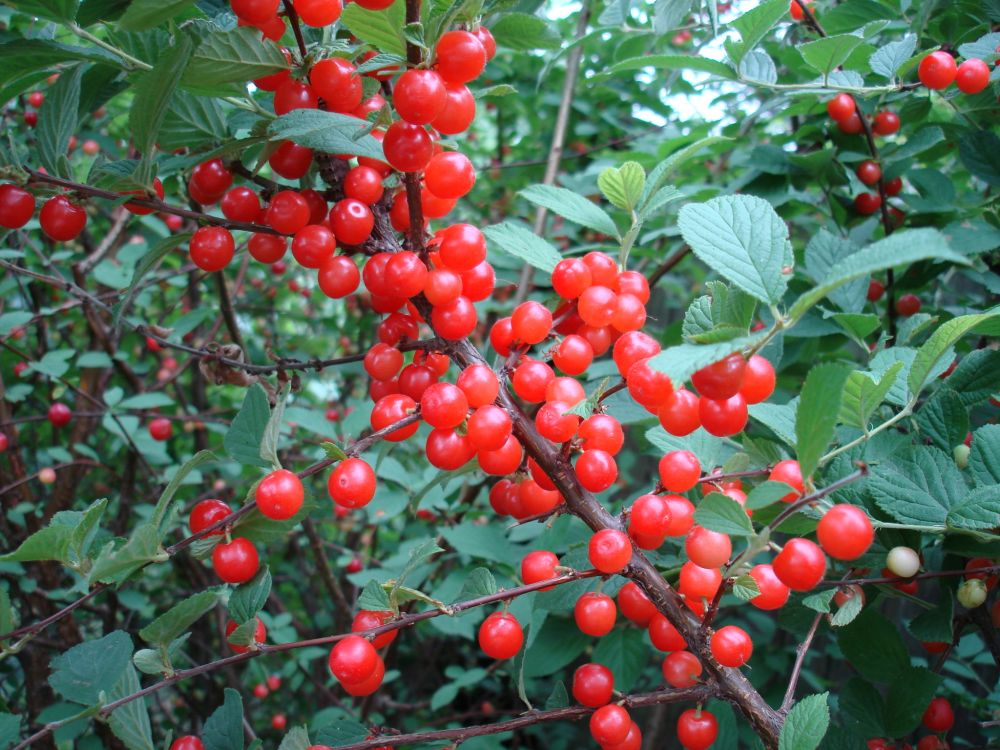
Beautiful blooms and tart-sweet cherries.
Nanking cherry is a fast-growing shrub known for its spring display of delicate white or pink blossoms, followed by bright red, tart cherries in early summer. The fruit is juicy and flavorful great for fresh snacking, baking, or making liqueur. This shrub is cold-hardy, drought-resistant, and tolerates poor soil. Its graceful form and early blooms also make it an ornamental favorite in edible landscapes and wildlife gardens.
9. Cornelian Cherry (Cornus mas)
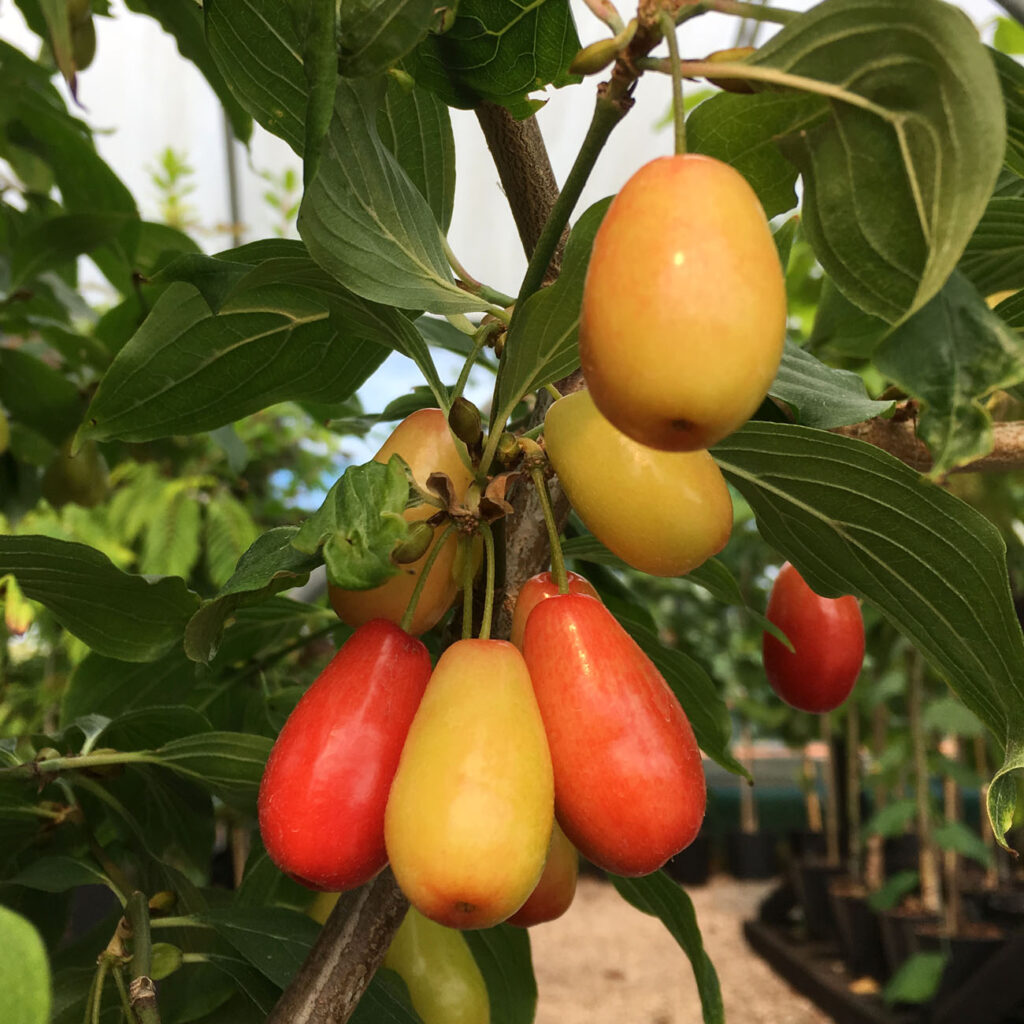
Dogwood with edible, cherry-like fruit.
A member of the dogwood family, Cornelian cherry produces small yellow flowers in very early spring, long before most plants wake up. These are followed by ruby-red, oblong fruits that resemble cherries and have a tart, cranberry-like flavor. They’re excellent for jams, jellies, or drying. The shrub also offers beautiful fall foliage and rugged adaptability to various soils and climates. It’s a true four-season performer with unexpected edible rewards.
10. Buffaloberry (Shepherdia argentea)
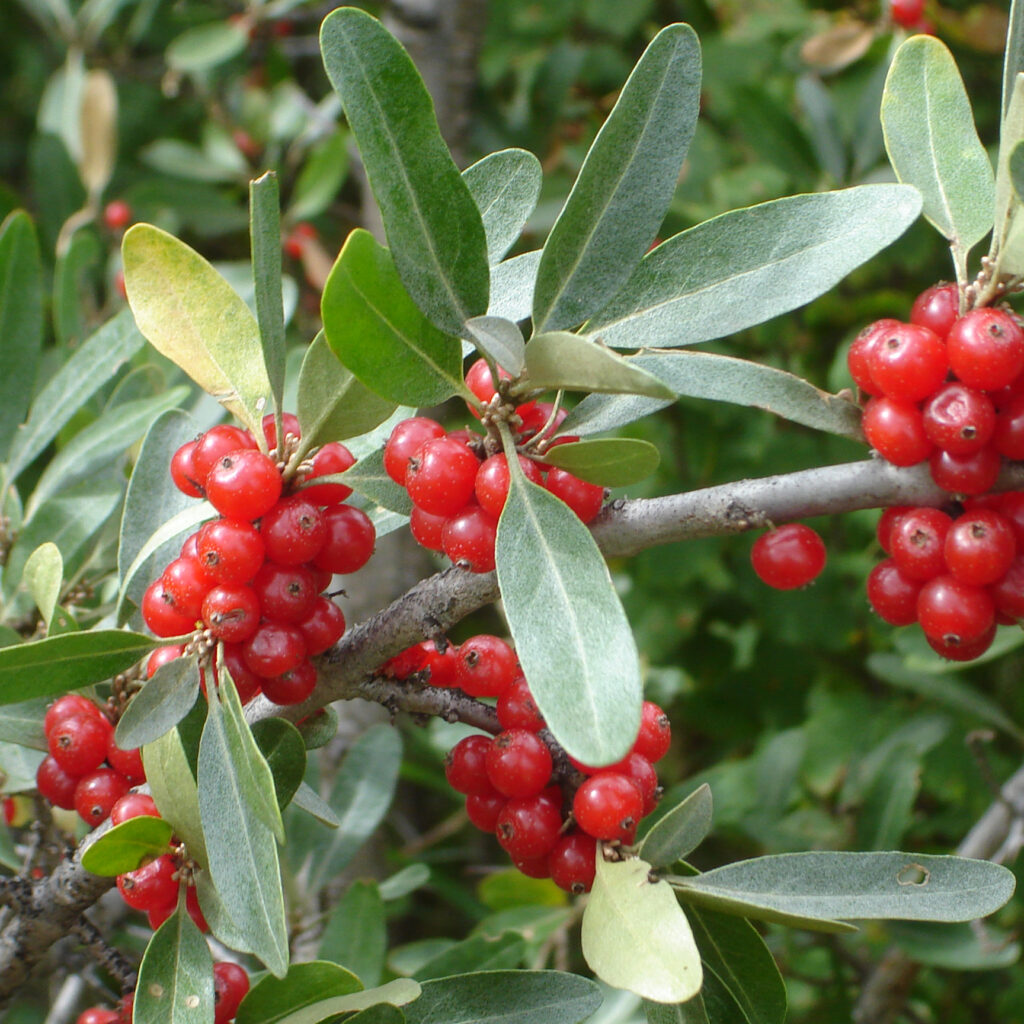
Native resilience with a nutritional punch.
Buffaloberry is a North American native shrub that thrives in poor soils, drought, and extreme cold. It produces silvery foliage and clusters of bright red berries that are rich in lycopene and antioxidants. Though a bit sour when raw, the berries are traditionally cooked into sauces and jellies. Buffaloberry also fixes nitrogen in the soil, helping other plants nearby. Its wild look suits naturalized or prairie-style gardens, and it’s an excellent choice for eco-friendly edible landscapes.

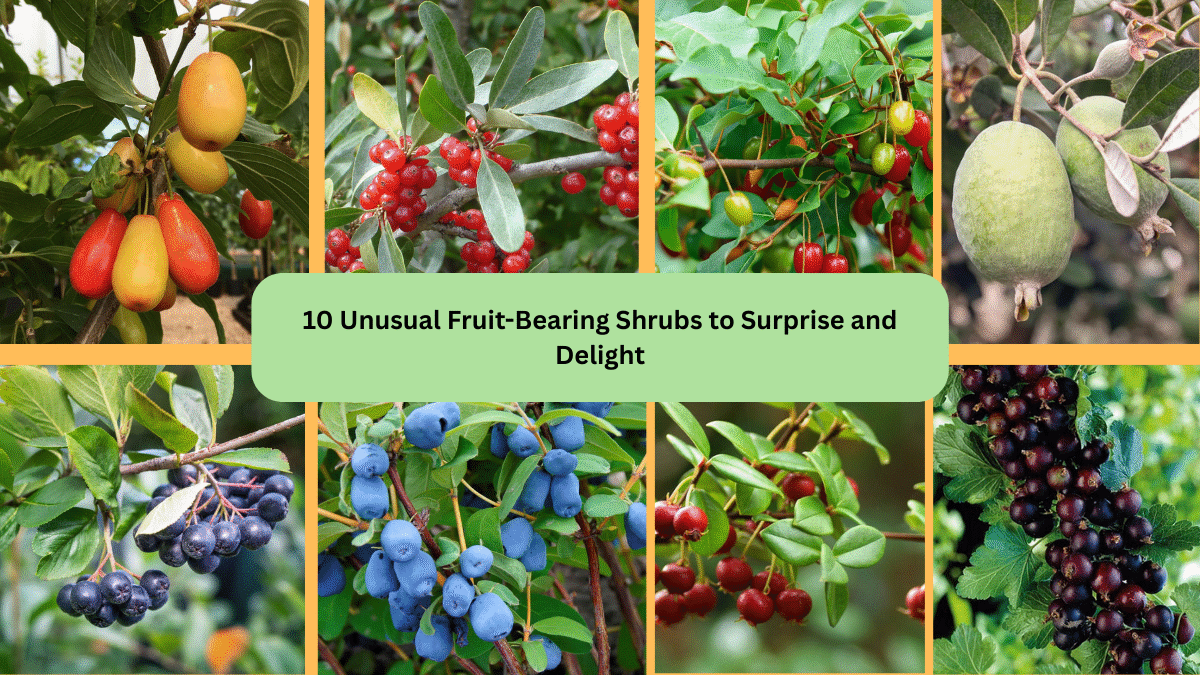



Leave A Comment